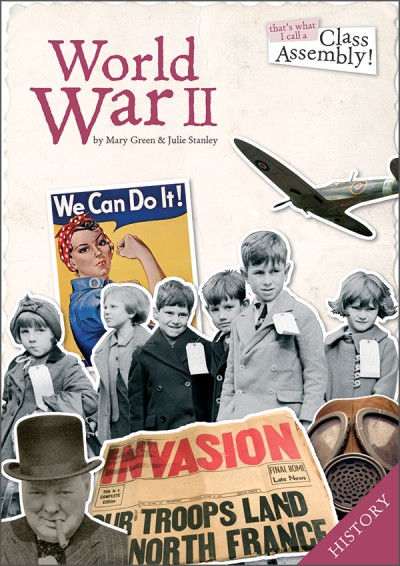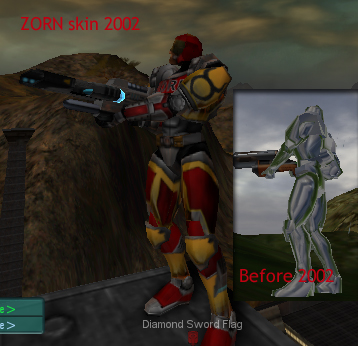
World War Ii Online Class
World War II: Check out this course to educate yourself on the causes and events of WWII and the eventually beginnings of the Cold War in the post-war era. UW War and American Society: Find out about the various ways that war. COD: WW2 Class Generator is designed to generate a random class for players to use in the Call of Duty: World War II multiplayer. If a bug is encountered, please contact admin@xmajikx.com.
At Harvard Extension School, free and open learning is hardly a new concept. In fact, the Extension School was founded with this mission in mind: to create an affordable way for any motivated student to take courses at Harvard. We stay true to this mission today, offering several free courses and nearly 800 for-credit courses at reasonable tuition rates.
Explore our series of free or low-cost courses below. In addition, you can also browse Harvard University's Digital Learning Portal, which features online learning content from across the University, both free and fee-based options.
Video accessibility. If you are unable to easily access any of the videos below, you may submit a request for accommodation, and we will work with you on your request.
Open Learning Courses with Harvard Faculty
Abstract Algebra
In these free videotaped lectures, Professor Gross presents an array of algebraic concepts. To explore the lectures, visit the Abstract Algebra Open Learning Course page
The Ancient Greek Hero
A long-time offering at Harvard College and Harvard Extension School, Gregory Nagy's popular exploration of the hero motif in classic literature is offered as a course for credit at Harvard Extension School, as a course on edX, and as a series of free video lectures. See The Hero in Ancient Greek Civilization Open Learning Course
American Poetry from the Mayflower through Emerson
Discover how the United States developed its own national literature with Elisa New, Powell M. Cabot Professor of American Literature at Harvard University. The course features conversations with public figures like writer Michael Pollan, economist Larry Summers, and Vice President Al Gore.
Watch a video, in which Elisa New discusses the design of the HarvardX course and the topics covered.
Read the course description for American Poetry from the Mayflower through Emerson
Bits
Explore how digital technologies inform issues of public policy, regulation, and law in this series of course lecture videos featuring Harry Lewis, Gordon McKay Professor of Computer Science, Harvard. See Bits: The Computer Science of Digital Information Open Learning Course
China
Study the world’s largest and oldest government from its ancient beginnings to the twenty-first century. Using Harvard’s vast visual collection, Peter Bol, Charles H. Carswell Professor of East Asian Languages and Civilizations at Harvard, and William C. Kirby, Chang Professor of China Studies at Harvard, show China in a new social and political light.
Watch the following video to get a sense of the tools used in the course, and visit the China: Traditions and Transformations Open Learning Course page
Intensive Introduction to Computer Science
In this course, taught by David Malan, you can learn programming languages like HTML, CSS, and SQL. Through real-world applications, you build computer science skills that can be applied in a variety of different job markets. Hear from students who have taken this course in the following video, and visit the Intensive Introduction to Computer Science Open Learning Course page
Masterpieces of World Literature
This course surveys world literature from the Epic of Gilgamesh to the present, with an emphasis on different cultures and writing traditions. Watch the course trailer below, and read the Masterpieces of World Literature course description
Saving Schools: History, Politics, and Policy in US Education
How did the American school system, which used to be the envy of the world, fall to a point where a majority of 15-year-old US students in math, science, and reading fall below the students in the majority of industrialized nations? Paul E. Peterson, Henry Lee Shattuck Professor of Government at Harvard University, explores school politics and the pros and cons of various reform options. Peterson discusses the topics covered in the edX course in the video below. You may also read more in the Saving Schools course description
Science and Cooking
Calling all foodies! Deconstructing classic dishes made by famous chefs, learning the basics of gastronomy, and understanding the scientific basics of recipes are just some of the topics and lessons covered in the course. You get to work in the laboratory and examine the soft materials that make up food. Each week you get to hear a different chef lecture about food and feel your glands salivate.
Sets, Counting, and Probability
Join Paul Bamberg, a senior lecturer on mathematics at Harvard, in the exploration of probability models for situations drawn from everyday life.
See the Sets, Counting, and Probability Open Learning Course page
Terms of Use
Please review our terms of use for all Open Learning Initiative content.
(Y,M,O,T,)From this day in history, a division of History.com(Y,M,O,T)From the Manhattan Project, an interactive history website through the Department of Energy.(Y)(M)Students discover how the Navajo language and people played a significant role in the U.S. Strategy to win World War II. Grade 8(Y)Students study the Navajo contribution to the United States during World War II while following the story of the Ned Begay as he starts out at a boarding school and later becomes a U.S. Marine who learns the Navajo Code. Students will learn how Ned's background and culture helped him survive and become successful in his education and his experience as a Marine.
Grade 4.(Y)Students discover the role Navajos in World War II. Students study historical aspects of reservation life, read maps to gain understanding, and apply geography to an historical event. Grade 4.(Y,M,O,T)The Aleutian World War II National Historic Area and Visitor Center in Dutch Harbor, Alaska, preserves the historic Fort Schwatka on Mount Ballyhoo. US Servicemen fought the Japanese here. At the same time, the local Unangan people were sent away from the area to internment camps a thousand miles away.(Y,M,O,T)From The History Place™ - World War Two in the Pacific.(O)Albert Einstein wrote a letter to President Roosevelt on August 2, 1939. The letter culminated in the bombings at Hiroshima and Nagasaki.(O)This is a four lesson unit in which each lesson plan is designed to stand alone. Students are given a comprehensive approach to U.S.
Involvement in World War II.(Y,M,O,T)Black fighter pilots who fought during World War II against the Germans. Racism in the Inited States required these men to serve together in an all black unit.(Y,M,O,T)A National Historic Site that commemorates the WWII Minidoka War Relocation Center in Idaho. The website offers historical information about the relocation center for those who cannot visit in person.(Y,M,O,T)In 1942, the United States government ordered more than 110,000 men, women, and children to leave their homes and detained them in remote, military-style camps.
Manzanar War Relocation Center was one of ten camps where Japanese American citizens and resident Japanese aliens were interned during World War II. The website offers historical information about the park for those who cannot visit in person.(Y,M,O,T)Preserves and interprets the stories and places of our nation's home front response to World War II.(Y,M,O,T)Largest Homeland Disaster during World War II. Reservations are required to visit this location. The website offers historical information about the park for those who cannot visit in person.(Y,M,O,T)Teaching with Historic places lesson plans(Y,M,O,T)During WWII, women signed up to fly with the US military. The Women Airforce Service Pilots (WASPS) test-piloted aircraft, ferried planes and logged 60 million miles in the air.(Y,M,O,T)National Geographic's Remembering Pearl Harbor page with resources and links, maps, timelines, survivor's stories, and more(Y, M.
O, T)A free field trip guide to 450 sites across all 50 states that help families learn about World War II.
